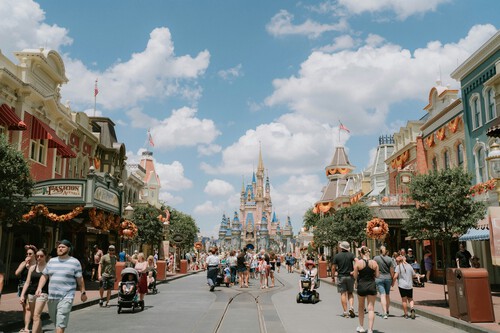Spending a day at a theme park can be a delightful experience, but one factor that can spoil the fun is waiting in lines. Whether it’s dealing with traffic jams, waiting to board a plane, or standing in line for rides, lines can waste a significant amount of your time (and money) each year. Fortunately, some parks are turning to AI to help alleviate this problem.
FastPass+ system. Disney is heavily invested in technology within its parks, using robots for guest interactions and employing innovative solutions to reduce waiting times at popular rides. FastPass+ isn’t simply a $400 pass (with park admission sold separately) that allows visitors to skip lines. Rather, it’s an AI-driven system designed to optimize visitor flow.
The FastPass+ system creates a virtual line, enabling guests to book access to select popular attractions through the My Disney Experience app. This reservation is linked to the Magic Band (a smart bracelet) or radio frequency tickets. Using AI to analyze usage patterns, the system alerts guests when it’s their turn, allowing them to enter rides without waiting in long lines.
Legoland’s Big Brother. Legoland also employs advanced technology to manage lines effectively. Its Vision AI system uses cameras placed above attractions to monitor real-time visitor numbers and park attendance. This information helps park managers make informed decisions about crowd management and improve the overall experience for their visitors.
Results. These measures aren’t taken lightly and serve a dual purpose. First, they make users happier by reducing the time they spend in lines. Second, they encourage them to spend more time in other areas of the park where they can purchase food, merchandise, and services. The effectiveness of these measures is refined over time, and some interesting results have already emerged.
For instance, Legoland’s analysis has revealed times when some rides had 10% of their seats empty. By implementing adjustments such as allowing single riders to enter, the park has increased the average number of rides per attraction by 30%. This means each visitor can enjoy one additional attraction per day.
Another finding is that visitors who use virtual items spend 25% more time in the park compared to those who don’t use them.
What about privacy? Disney’s system operates like an Excel spreadsheet with AI support, raising concerns about privacy in a tool that uses cameras to monitor park visitors actively. While there are cameras already in place for security purposes, Legoland’s system involves constant monitoring.
In statements to Business Insider, park officials clarified that cameras “analyze the number of people physically riding those attractions at any given time. It doesn’t identify you uniquely, but it identifies the number of people riding an attraction.” In other words, cameras track human silhouettes and movements, not facial features.
Lines at theme parks clearly pose such a massive challenge for visitors that there are educational courses dedicated to better line design. Perhaps AI and its real-time analytics could offer a solution to managing these lines more effectively.
Image | Kaleb Tapp
Related | There Are Certain People Who Bring Something Else Besides Food to Disney Parks: Human Ashes




View 0 comments